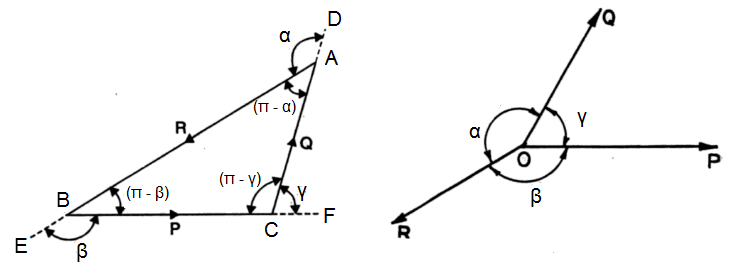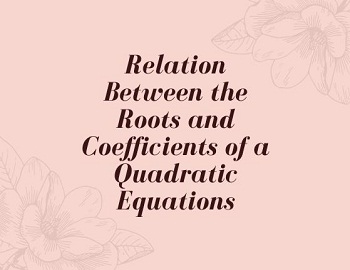Lami’s Theorem:
If three forces acting on a particle keep it in equilibrium, then each is proportional to the sine of the angle between the other two.

Proof- Let the three forces P, Q, and R acting on a particle O be in equilibrium and let α, β, and γ be the angles between Q and R, R and P, P and Q respectively.
Since the forces P, Q, and R acting at point O are in equilibrium, they can be represented by the sides BC, CA, and AB of △ABC, drawn parallel to the directions of P, Q, and R respectively.
| ∴ ∠BAD = α, ∠CBE = β, and ∠ACF = γ ∴ ∠BAC = π – α, ∠ABC = π – β, and ∠ACB = π – γ |
Now, P, Q, and R are represented by BC, CA, and AB respectively.
| ∴ P/BC = Q/CA = R/AB ……….(i) |
| From sine rule, we have BC/sin ∠BAC = CA/sin ∠ABC = AB/sin ∠ACB ⇒ BC/sin (π – α) = CA/sin (π – β) = AB/sin (π – γ) ⇒ BC/sin α = CA/sin β = AB/sin γ ……….(ii) From (i) and (ii) we get P/sin α = Q/sin β = R/sin γ |









Comments (No)